Insulate well today, work well tomorrow
How office partition walls improve work performance.
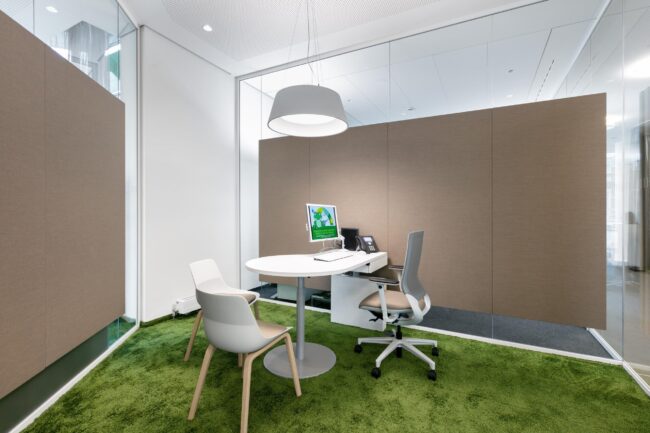
In today’s service-based society, value more than ever before is created from behind a desk. More are more companies, regardless of their nature, are realising the same thing: Their primary capital lies in the heads of their employees.
This makes the ability to concentrate one of the most vital if not the most vital element in any office. But in an environment that seems to be getting faster and louder, it is simultaneously becoming one of the biggest challenges for many. The result: Knowledge workers increasingly long for places to which they can retreat, work in peace and give free rein to their creativity. The name given to this type of work is “deep work”.
In traditional offices, such spaces often don’t exist. The fact that they are urgently needed, however, is reflected in the increasingly common use of headphones in offices. Aids such as these provide short-term relief, but do not solve the real problem: Knowledge-work needs space for concentration.
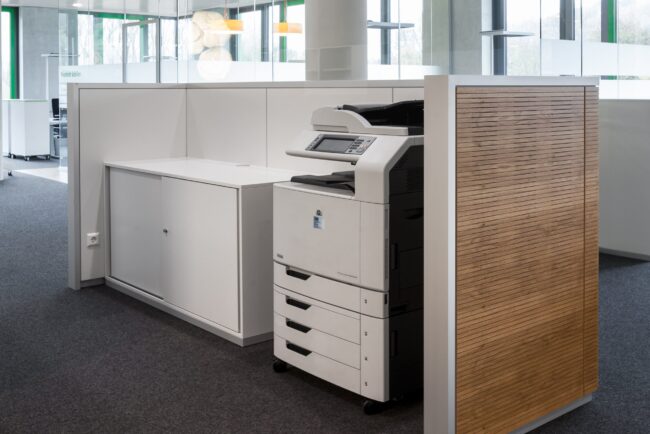
Noise reduces work quality
When the corridor printer hums continuously, the kitchenette door squeaks every minute and colleagues in neighbouring offices make loud phone calls, we feel disturbed – even though these are in themselves seemingly harmless background noises.
Even at a low level, noise is a stress factor that impairs our performance, because it has a direct effect on the central nervous system and triggers psychomental reactions. In other words, you can’t consciously avoid it. This makes noise one of the most common workplace hazards in Germany.
The Federal Institute for Occupational Safety and Health therefore specifies concrete noise limits for different categories of activity. For activities requiring high concentration, creativity and good communication, the maximum Lr rating level (based on a measurement averaged over eight hours) is 55 dB(A). Even a normal conversation can exceed this limit.
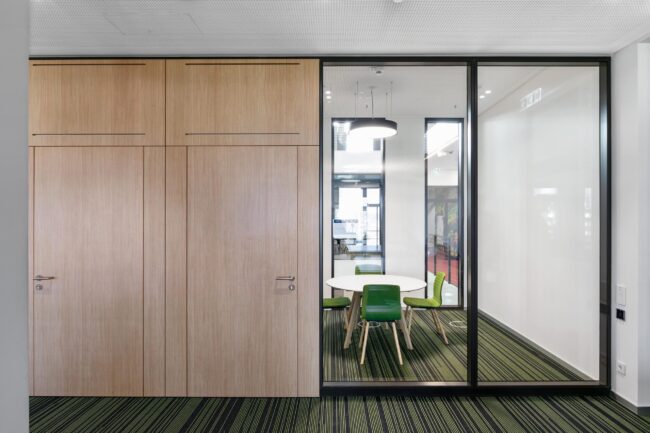
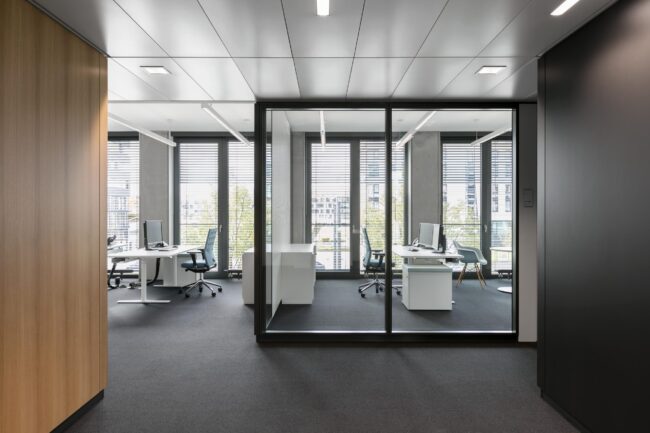
Partition walls: Less sound, more discretion
Noise is often unavoidable in everyday office life. In order to nevertheless reduce stress at the workplace, room-to-room sound transmission needs to be reduced. In other words, there is a need for “sound insulation”. Partition walls can fulfil this function, in particular where spaces are already defined or cannot be changed.
How well a partition wall insulates sound is indicated by the sound insulation value in decibels. The principle is simple: The higher the sound insulation value of the wall, the less sound reaches the neighbouring space. At the same time, language becomes increasingly incomprehensible. Therefore, system partition walls not only reduce the general noise level and create productive spaces, they also contribute to greater discretion.
Despite the strong influence of sound and noise on the ability of office workers to concentrate and the quality of their work, in practice there are no building regulations. As a substitute, the recommendations of Supplement 2 of DIN 4109 “Sound insulation in buildings”, 1989-11, are often used as guide values. Effective sound insulation involves more than just the walls, however.
Besides the actual partition walls, the resulting sound insulation between two spaces is also determined by the flanking components such as the floor, wall, facade and ceiling. The component with the lowest sound insulation value is decisive. Doors are considered separately, since as movable components they generally have lower sound insulation.
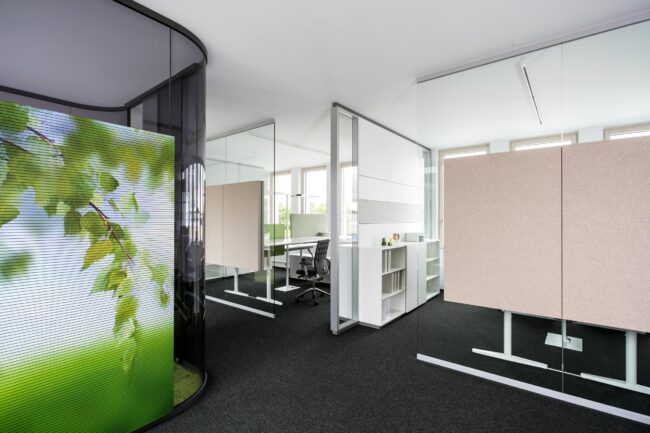
Material and surface are key
When it comes to office design, many office planners and architects today opt for concrete and glass. But materials that might be impressively modern-looking bring with them a disadvantage from an acoustic point of view: Used over large areas, they form sound-reflecting surfaces that lead to long reverberation times. Since suspended ceilings are often not an option due to component activation, compensation areas are needed to improve room acoustics.
In order to reduce reverberation times, sound-absorbing surfaces are often used therefore in line with the principle of “sound absorption”. Partition walls can also dampen sound. For this purpose, their surfaces are slit or perforated. Depending on the wall structure and slits or perforations, different degrees of sound absorption can be achieved.
But even without partition walls, sound absorption can be promoted in the office by using sound-absorbing furniture and elements. With their porous surfaces, for example made of fabric or felt, they can not only create visual highlights and form new spatial zones, but also noticeably reduce reverberation times in the office and thus improve the room acoustics.
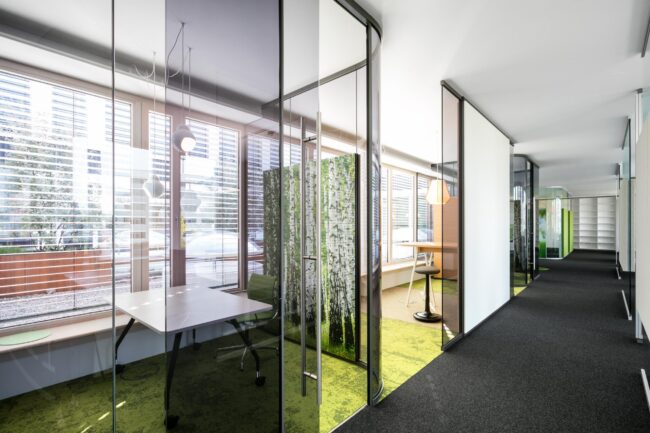
Acoustics in the office can be planned
By carefully designing sound insulation and absorption, noise impact at a desk can be actively controlled – and ultimately therefore also the concentration level and work quality of employees. System partition walls are particularly well suited to this due to their acoustic properties.
However, since the resulting sound insulation within the building depends on many different contractors and other factors, we generally recommend involving a building acoustician and specifying objectively comparable sound insulation test values in tender invitations. For this reason, all the sound insulation test values for our feco system partition walls have been determined in a building acoustics test rig and verified by comprehensive test reports.
Would you like to know how you can optimise the acoustics in your new office (or office project) using feco system partition walls, and which sound insulation is the right one for your requirements? If so, simply come to our feco-forum and test the different sound insulation test values of our feco system partition walls yourself in model spaces. Our experts will be happy to help and advise you.